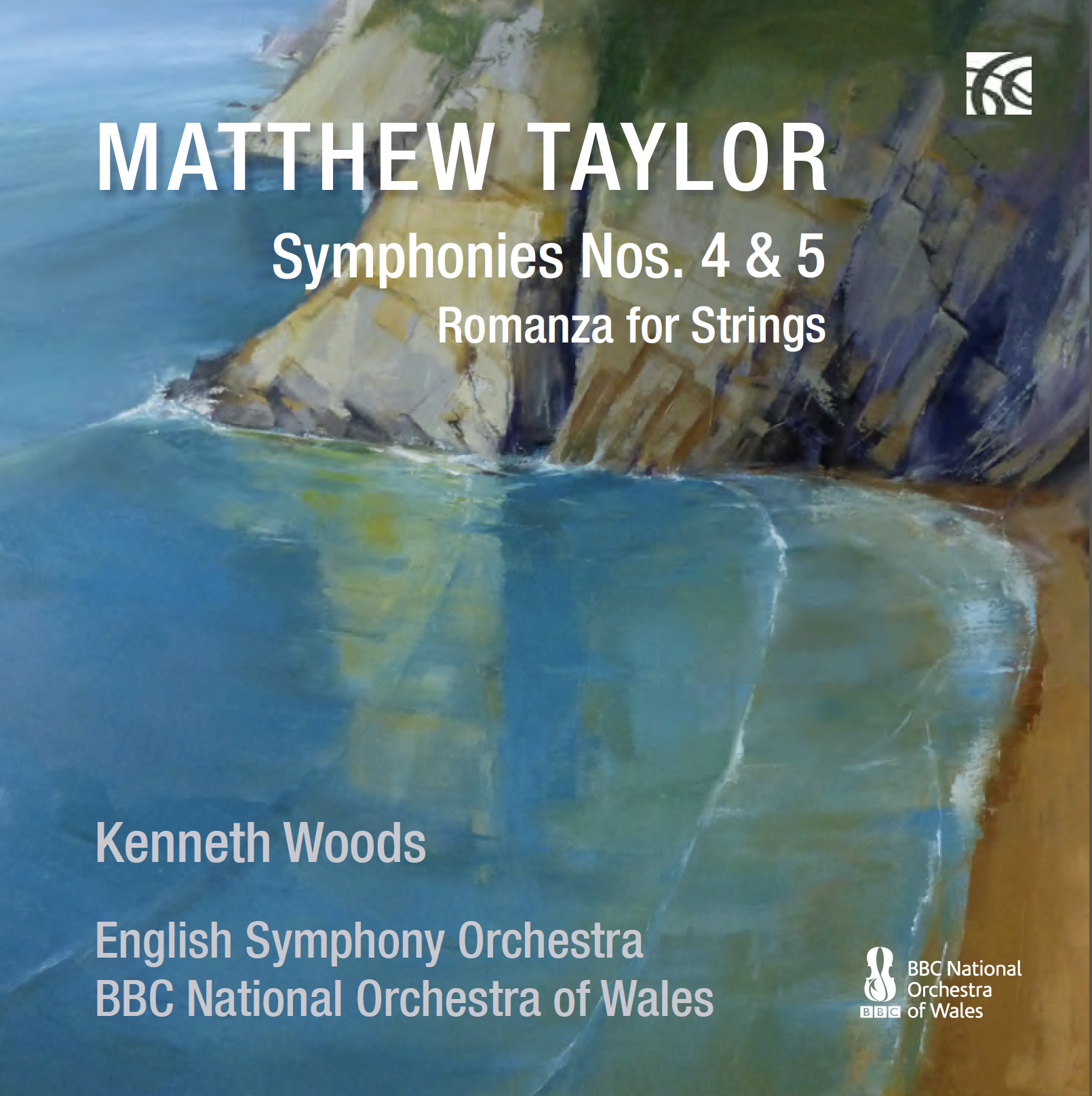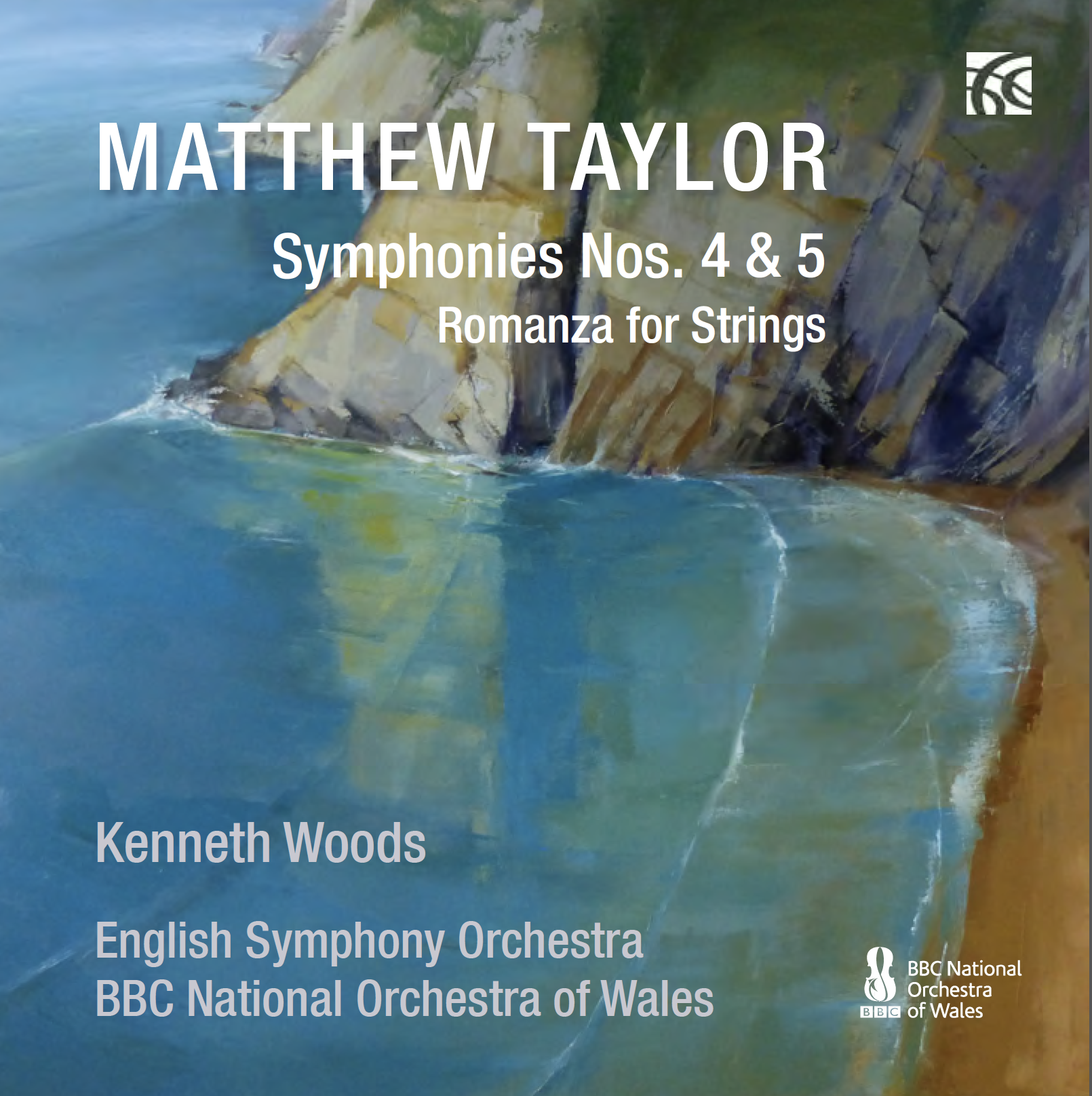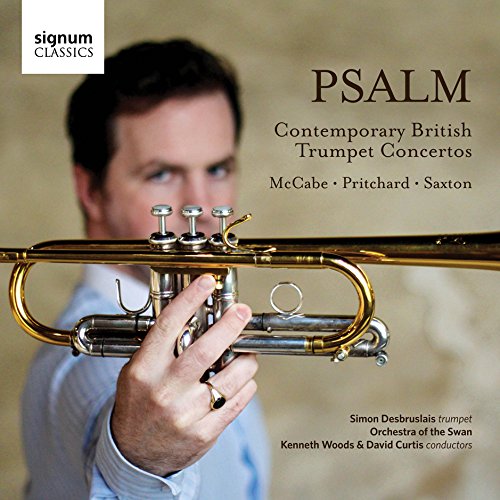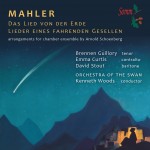Description
 Worldwide release date – 6 November 2020
Worldwide release date – 6 November 2020
Critical Response
RECORDING OF THE YEAR – Audiophilia Magazine
“The ESO responded with playing of sustained emotional power such as carried through this movement’s plangent twin climaxes and on to its resigned coda. Not that there was any lack of commitment earlier – Kenneth Woods having set a suitably headlong tempo for the first movement as left his players unfazed, then characterising the central intermezzi with regard for their subtly different auras. A fine rendering of a piece which amply reinforces Taylor’s standing as a symphonist of stature.” Richard Whitehouse – Arcana.FM
“I regard Matthew Taylor’s new piece to be a masterwork of genuine symphonic thinking, given a performance of which any composer would have been thrilled.” Robert Matthew-Walker – Classical Source
Five Stars. “Written in memory of John McCabe, another fine symphonist, Taylor’s Fourth Symphony erupts like an unstoppable (or, indeed, inextinguishable) force of nature…The scoring is imaginative, with evocative use of woodwind, harp and percussion, yet none of the instrumentation is allowed to detract from the musical argument, which is unfailingly rewarding….Premiered in 20219 [as part of the ESO’s 21st C. Symphony Project], Taylor’s Fifth Symphony is a powerful utterance… an imposing, personal and deeply felt work that offers a substantial counterweight to commentators who write off the symphony as an irrelevant form. Matthew Taylor’s control of pace and grasp of structure is especially striking throughout and helps to create a sense of inevitability that is the hallmark of a score of real substance…Kenneth woods is an inspiring guide to these three works. in the Fourth Symphony and the Romanza, the playing from the BBC National Orchestra of Wales is spontaneous and polished, while the English Symphony Orchestra’s committed advocacy brings both purpose and poetry to the Fifth Symphony. Recording and documentation are exemplary. This is an outstanding release.” Paul Conway, Musical Opinion
“With this release Taylor’s standing as a major British symphonist of our time, in the tonal, northern European tradition, is further reinforced. The first movement revels in the kind of bravura extrovert exuberance which is an essential and unmistakable trademark of Nielsen’s symphonic style; bold, commanding, imperturbably sweeping all before it… The Fifth Symphony…. is a more intense, strenuous work than its predecessor. The first movement is a tense, combative sonata-(ish)-Allegro, that sounds little like the Beethoven but shares its concise, shattering impact, with enormous momentum built from cascading short motifs….The huge Adagio-finale – almost as long as the other movements combined – is a memorial to the composer’s mother. The Mahlerian feel of the slow movement of the 4th is equally present in the early part of this sombre music, which becomes increasingly vehement and tragic as it passes through two extended development or variation episodes on the main material of the movement. The explosive timpani solo from the first movement interrupts this precipitous descent into darkness which is replaced by a sorrowful string threnody, cut short by the leaden echo of a terrifyingly bleak brass chord.” Records International
“In all 3 pieces, Woods secures a dedicated response from the players so Taylor’s exacting yet practicable writing is heard to advantage, not least in acoustics whose immediacy emphasizes this music’s rapt inwardness as keenly as its untrammelled energy.” Arcana.FM
“This was my first exposure to the music of Matthew Taylor. I was impressed. Here is a composer who definitely has something to say and who communicates very effectively and directly with his audience. The music is tonal but employs dissonance to excellent effect. The music is thoroughly convincing at all times and I was struck by the assurance with which Taylor writes for the orchestra. On this evidence, he has a fine ear for texture and colour… I’m sure that the music’s cause is helped greatly by the expert performances that are turned in by the BBC National Orchestra of Wales and the English Symphony Orchestra. Kenneth Woods is clearly committed to Taylor’s music, as is evident from the strength of conviction in the performances and the attention to detail which allows the nuances of the scoring to come through.” John Quinn, MusicWeb International
“This was special… From the onset of Taylor’s opening Allegro—by his own admission, his first essay at a “concise, vigorous sonata-like Allegro”—two things are immediately recognisable: his distinctive musical voice, rooted perhaps in Beethoven and Nielsen (amongst others) but refracted through the benign yet furioso influence of Robert Simpson (who composed his 11th Symphony for Taylor), and a totally sure sense of symphonic scale….The second and fourth movements open with threnodic themes that would not have shamed Mahler, bringing out some fine playing from the strings, plus some quicksilver wind writing (which briefly reminded me of Martinů) likewise delivered immaculately. In the finale, the opening span’s anger is transmuted most eloquently into grief. Divided into two substantial paragraphs, the first seems to have found a form of serenity, albeit shot through with a keen sense of loss, which is then blasted away by the final section which reaches its catharsis in the work’s second timpani cadenza. The close, however, is magical: a lovely, lyrical passage for the quartet of cellos followed by a single snarl from the trombones.” Guy Rickards – Musical Opinion




Admin –
From Classical Lost and Found
https://clofo.com/Newsletters/C210228.htm
Taylor, Mat.: Sym 4, Romanza (stgs), Sym 5; K.Woods/BBCWalNa O/Eng SO [Nimbus]
RECOMMENDED BEST FIND (1 CD)
Some years ago, we told you about English, composer-conductor Matthew Taylor (b. 1964; see 27 May and 23 September 2013). He’s written a significant body of works, many in the orchestral genre, and these include five symphonies, the last two being featured on this new Nimbus release.
The program begins with his Fourth Symphony of 2015-16. Calling for a large orchestra, this brilliantly scored work is cast in a single movement that falls into three spans. The first marked “Giubiloso” (“Jubilant”) [T-1] gets off to a vivacious, scherzoesque start [00:03], which may bring to mind more colorful moments in Ottorino Respighi’s (1879-1936) Fontane di Roma (The Fountains of Rome; 1914-16).
Then there’s a wild timpani outburst [01:57] followed by a whimsical episode [02:15], where it’s easy to imagine twittering birds [02:30], and what sound like feline meows [02:51]. This transitions into smiling passages [04:54] that turn increasingly radiant [08:12] as they build to a joyous climax [10:31].
Subsequently, the music ebbs attacca into an “Adagio teneramente” (“Slow and tender”) [T-2], which opens with a pensive melody for the violas [00:00]. It elicits a searching, wind-dominated segment [02:57] that invokes an aria-like episode for unison strings and brass [04:28]. The latter becomes increasingly dramatic, only to die away into a clarinet solo [07:16], which calls up brooding, wind-laced passages that end this span mysteriously.
After a brief pause, there’s “Finale buffa” (“Droll finale”) [T-3] that starts “Allegro giocoso” (“Fast and playful”) with a flippant flourish [00:00]. This is immediately followed by a mischievous ditty [00:03], which despite repeated jeers manages to solicit a waltzlike section [01:34-02:22].
The composer tells us the latter pays homage to Brahms (1833-1897), whom he refers to as one of his Gods, and more specifically that great German master’s Liebeslieder-walzer (Op. 52 & 65; 1868-74). Then the music resumes “Giubiloso, brioso, vivo” (“Jubilant, spirited, lively”) [02:23], and timpani underlined, big-tune flashes of past ideas [05:02] end the work in a blaze of glory.
A brief Romanza for Strings (2006) [T-4] serves as an interlude before the other major offering here. It’s a short, stand-alone piece that’s an arrangement the composer made of the second movement from his Sixth String Quartet (2006-08). The work opens with a subdued, expansive, songlike melody (SS) [00:01], which becomes quite urgent. However, this subsides [03:35] into melancholy memories of SS [04:26] with some gloomy cello passages [06:04] that bring the piece to a sorrowful conclusion.
Then it’s on to the four movement Symphony No. 5 (2017-19), where the opening “Allegro” [T-5] is a sonata-form-like creation with a loquacious, opening thematic nexus (LN) [00:01]. In accordance with what the composer tells us, it would seem LN reflects the expressiveness of Beethoven’s (1770-1827) Fifth (Op. 67; 1807-08), which apparently made a great impression on him around the age of five. Additionally, there’s an angularity about LN that brings to mind the music of Robert Schumann (1810-1856), whom Matthew says is probably his favorite composer.
After that there’s a delicate, tuneful idea [02:01], and both of the preceding thoughts undergo an engaging development [03:13]. This leads to an animated recap [05:05] and an explosive martial, brass-drum-laced coda [06:46] with a pounding-timpani cadenza [07:10] that ends things boisterously.
The last three movements are each, personal tributes to meaningful people in the composer’s life (see the album notes), and he describes the first two as “gentle intermezzi”. Scored for chamber forces, they’re respectively marked “Allegretto misterioso” (“Lively and mysterious”) [T-6] and “Allegretto tranquillo” (“Lively and tranquil”) [T-7]. Accordingly, both come off as delicate, pastoral offerings.
Then the mood turns more introspective in the final “Adagio” [T-8], where by Taylor’s own admission there are intimations of Beethoven’s (1770-1827) Choral Symphony (No. 9, Op. 125; 1822-24) as well as Bruckner’s (1824-1896) Seventh (WAB 107; 1881-83). That said, here an opening anguished, rumination (AR) [00:01] features weeping strings and sobbing brass. It’s followed by an ethereal, woodwind-spiced, chamber-like episode [02:20].
Subsequently, low strings [05:09] introduce tragic, brass-highlighted reminders of AR. These invoke fleeting string passages [06:09] followed by a brass and drum accented outburst [06:47], which subsides into a recap coda [07:02].
Here all of the work’s main ideas reappear, and it becomes a brass-reinforced, march-like chorale (BM) [08:09] that builds in intensity, giving way to another timpani cadenza [09:48] (see the first movement). The latter then dies away into subdued reminders of BM [10:11], which bring the work to a remorseful conclusion with a final, crestfallen, brass chord [12:01].
The English Symphony Orchestra (ESO) under its Artistic Director and Principal Conductor, Kenneth Woods, give a superb account of this Symphony. They make a strong case for some late-romantic, British music that bears repeated listening to discover all of its subtleties.
As for the first two selections, they also find Maestro Woods on the podium, but in front of the BBC Wales National Orchestra. Generally speaking, these are more playful works, and he elicits buoyant performances of both, for which they’re all the more fetching.
The Fifth Symphony was recorded 8 June 2019 in St. Jude’s on the Hill, London. The other two took place on 14 January 2020 at BBC Hoddinott Hall located in Cardiff, Wales, some 150 miles west of London.
Despite their different times and locations, all three present amazingly consistent, generous sonic images in pleasantly reverberant surroundings. The orchestral timbre is characterized by lifelike highs as well as mids, while the bass is lean and clean. That said, the overall sound is generally serviceable, and will particularly appeal to those liking wetter sonics.
— Bob McQuiston, Classical Lost and Found (CLOFO.com, P210227)